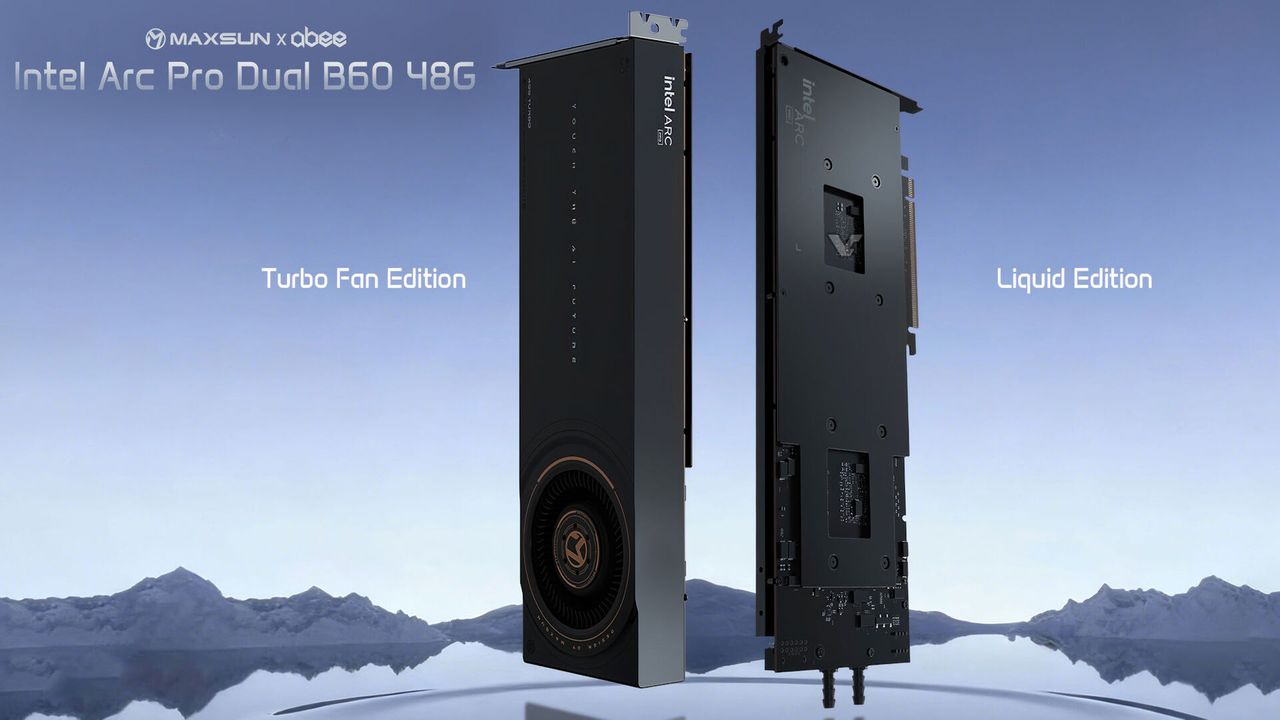
- MaxSun design revives long-abandoned dual-GPU engineering with modern cooling
- Each slim card manages 48GB of memory and dual GPUs in tight spaces
- MaxSun Intel Arc Pro B60 48G Turbo Edition Enables Dense GPU Stacking Across PCIe 5.0 Bandwidth
Chinese graphics card maker MaxSun has revealed a liquid-cooled version of Intel’s Arc Pro B60 that combines two GPUs in a single-slot design.
The model, called “MaxSun Intel Arc Pro B60 48G Turbo Edition,” is part of a collaboration with abee, a company known for its minimalist workstation hardware.
Dual GPU cards were once common among high-end graphics solutions, but were gradually abandoned due to heat, power, and driver complexities.
A rare dual-GPU return in a slimmer form
MaxSun’s decision to revisit this configuration with the Arc Pro B60 stands out because it uses a liquid cooling system to manage thermals while keeping the design within a single PCIe slot.
The redesign is said to allow the card to fit into all seven high-speed PCIe 5.0 x16 slots on a W790 motherboard.
This makes it a potential option for dense workstations or small-scale data center setups.
Each card carries 48GB of total VRAM, split between two GPUs that reportedly share a PCIe 5.0 x16 interface.
However, this connection is split into x8 lanes per GPU, meaning performance will depend on how efficiently the software distributes workloads.
In theory, the setup allows users to install four of these cards per system, which equates to eight GPUs and a total of 192GB of VRAM when fully configured.
While the setup looks powerful on paper, real-world efficiency remains uncertain, particularly in mixed AI and rendering applications.
MaxSun has not announced a release date or price for the liquid-cooled Arc Pro B60.
The company hinted that it was designed specifically for abee systems built around W790 motherboards.
This will likely limit availability to systems integrators rather than retail buyers.
There are no independent benchmarks or confirmation from Intel, so the performance and stability of this liquid-cooled dual-GPU setup remains largely theoretical.
Despite its advanced engineering, it remains to be seen whether this design can overcome the scaling challenges that made dual-GPU architectures impractical.
The Arc series has also struggled to match the driver maturity and performance stability found in Nvidia and AMD hardware.
That makes this design intriguing on paper but uncertain in practice. For now it appears to be an ambitious experiment rather than a technological breakthrough ready to reshape the use of GPUs for artificial intelligence tools or modern data centers.
Follow TechRadar on Google News and add us as a preferred source to receive news, reviews and opinions from our experts in your feeds. Be sure to click the Follow button!
And of course you can also follow TechRadar on TikTok for news, reviews, unboxings in video form and receive regular updates from us on WhatsApp also.



